Key Takeaways
-
Early Detection: Look for small, round holes in wood, sawdust beneath eaves or decks, buzzing near wooden structures, and woodpecker activity around infested areas.
-
Seal and Treat Wood: Painting, staining, or sealing exposed wood surfaces makes them less appealing for carpenter bee nesting.
-
Natural and Eco-Friendly Solutions: Use essential oils like citrus, eucalyptus, and peppermint, install fine mesh screens, and hang fake wasp nests to deter carpenter bees naturally.
-
Use Carpenter Bee Traps: Install traps near high-activity areas to capture and reduce carpenter bee populations effectively.
-
Professional Intervention: Call a pest control professional for recurring or severe infestations to prevent long-term structural damage.
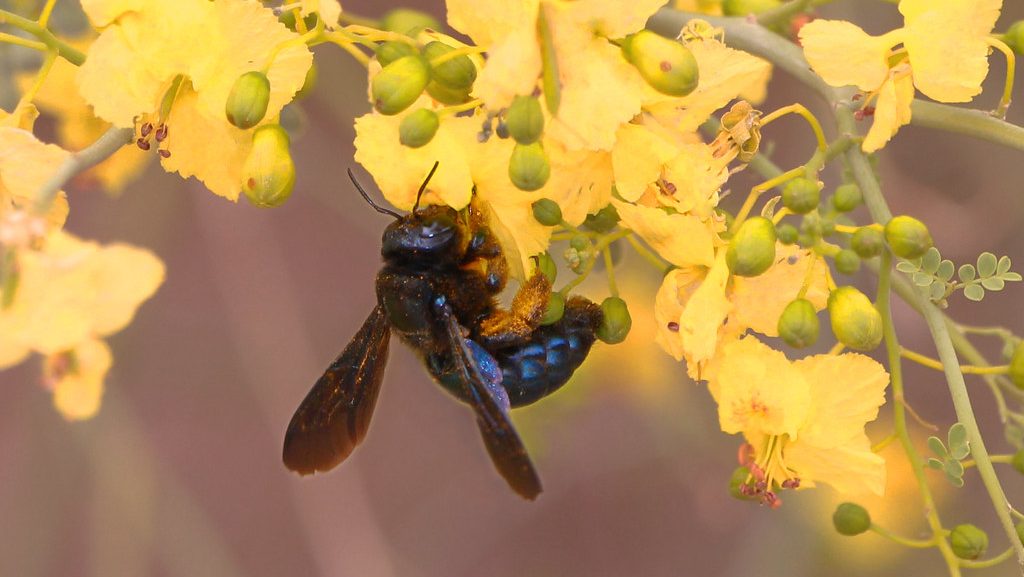 Carpenter bees—have you ever noticed these seemingly harmless insects buzzing around your porch? You might think they’re just another type of bee going about their business, but guess what?
Carpenter bees, despite being beneficial pollinators, quietly have always posed a significant threat to wooden structures in US homes. Unlike termites, carpenter bees don’t eat wood—instead they drill tunnel into it to create nests for laying their eggs, causing structural damage and weaking of it. If you’re noticing small, perfectly round holes or piles of sawdust near wood structures around your home, you’re likely dealing with carpenter bees. It sounds innocent enough, but these tunnels can cause significant damage if ignored.
This article provides practical guidance on recognizing carpenter bee activity, preventing structural damage using eco-friendly methods, and knowing when professional pest control services are necessary. It also offers long-term strategies for carpenter bee management to keep your home safe.
Think you’re dealing with carpenter bees? Don’t let them damage your home further—schedule your Free Pest Inspection today. Our specialists will help you identify carpenter bee issues early and protect your property effectively.
Carpenter bees—have you ever noticed these seemingly harmless insects buzzing around your porch? You might think they’re just another type of bee going about their business, but guess what?
Carpenter bees, despite being beneficial pollinators, quietly have always posed a significant threat to wooden structures in US homes. Unlike termites, carpenter bees don’t eat wood—instead they drill tunnel into it to create nests for laying their eggs, causing structural damage and weaking of it. If you’re noticing small, perfectly round holes or piles of sawdust near wood structures around your home, you’re likely dealing with carpenter bees. It sounds innocent enough, but these tunnels can cause significant damage if ignored.
This article provides practical guidance on recognizing carpenter bee activity, preventing structural damage using eco-friendly methods, and knowing when professional pest control services are necessary. It also offers long-term strategies for carpenter bee management to keep your home safe.
Think you’re dealing with carpenter bees? Don’t let them damage your home further—schedule your Free Pest Inspection today. Our specialists will help you identify carpenter bee issues early and protect your property effectively.
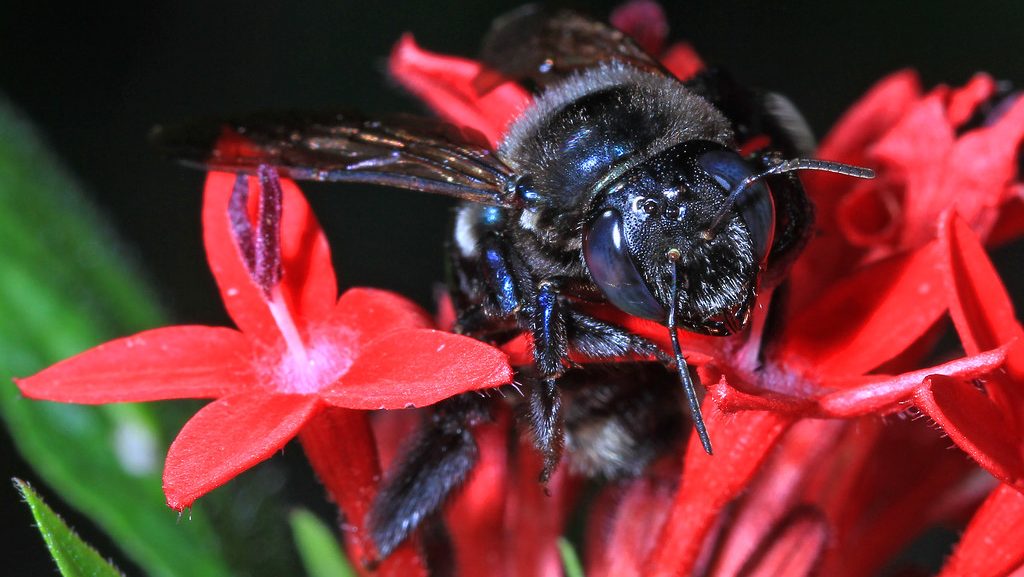

Not getting a solution?
Get your free pest control estimate today!Understanding Carpenter Bees
Do you know what a carpenter bee looks like? They are large bees, similar in appearance to bumblebees, but with shiny, black abdomens. They are solitary insects that bore and drill into wood neatly, round holes about ½ inch wide to create nests for laying eggs. Female carpenter bees create tunnels that can extend several inches into wood structures, causing structural weakening over time. They prefer unpainted, untreated softwoods like cedar, pine, and redwood. If you spot sawdust piles (known as frass, a fancy word for bee leftovers), yellow stains, or buzzing sounds around wooden structures, you’ve probably got unwanted visitors.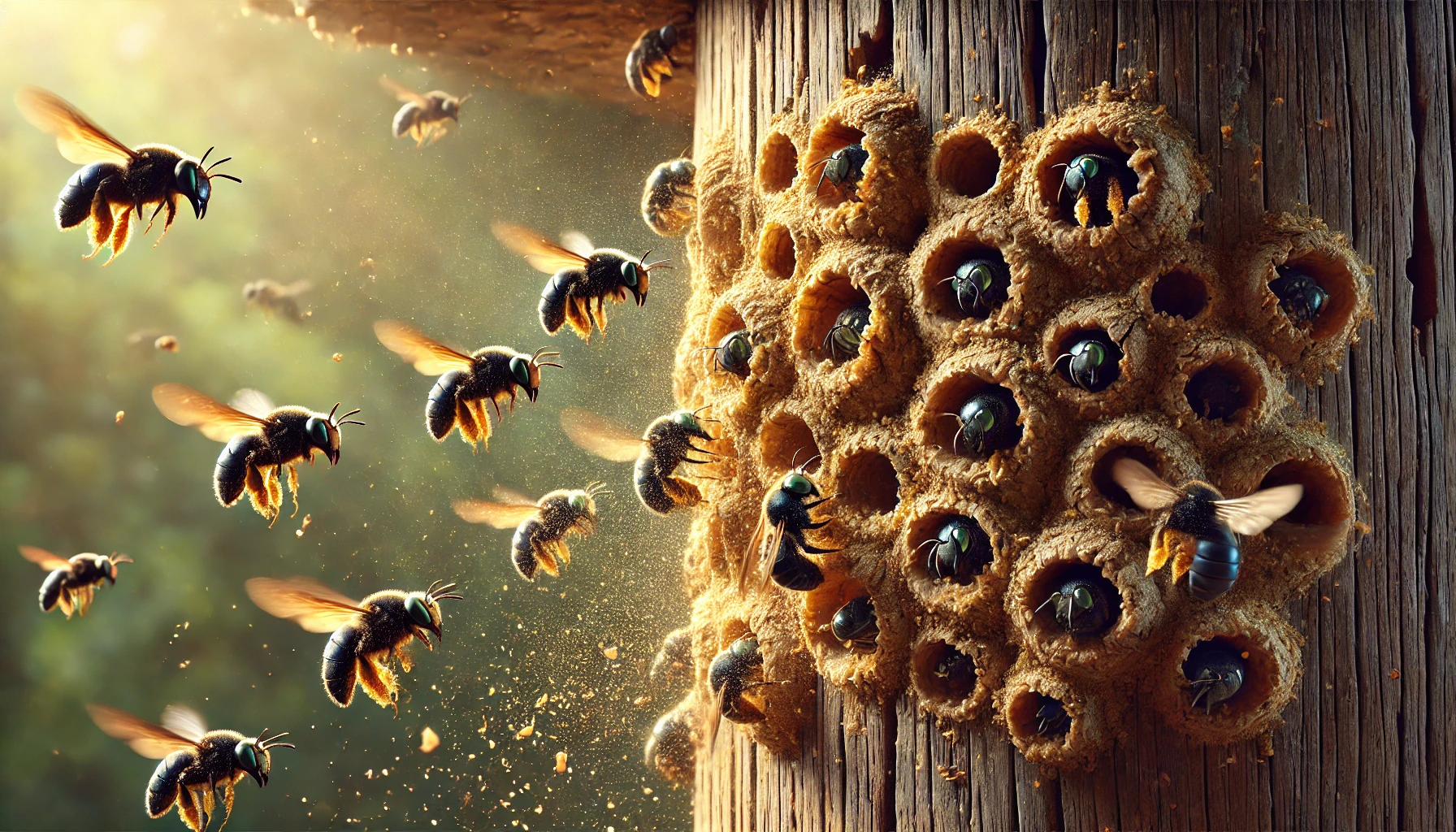
Signs of Carpenter Bee Activity
To effectively prevent damage, it’s crucial to recognize carpenter bee activity early:- Round holes in wooden surfaces (about ½-inch diameter)
- Sawdust piles below holes (known as frass)
- Bee activity around wooden structures in spring and summer
- Woodpecker damage, as they hunt for bee larvae
- Yellowish stains near entry holes due to bee waste
- Audible buzzing or chewing sounds within wood structures
Why You Shouldn’t Ignore Carpenter Bee Damage
Ignoring these little guys isn’t an option. Their seemingly small tunnels gradually expand, weakening your deck, porch, or siding. Woodpeckers love feasting on the larvae, creating even bigger holes in your wood. What starts as a minor annoyance quickly escalates into costly repairs. Plus, let’s face it, no one wants their house to look like Swiss cheese.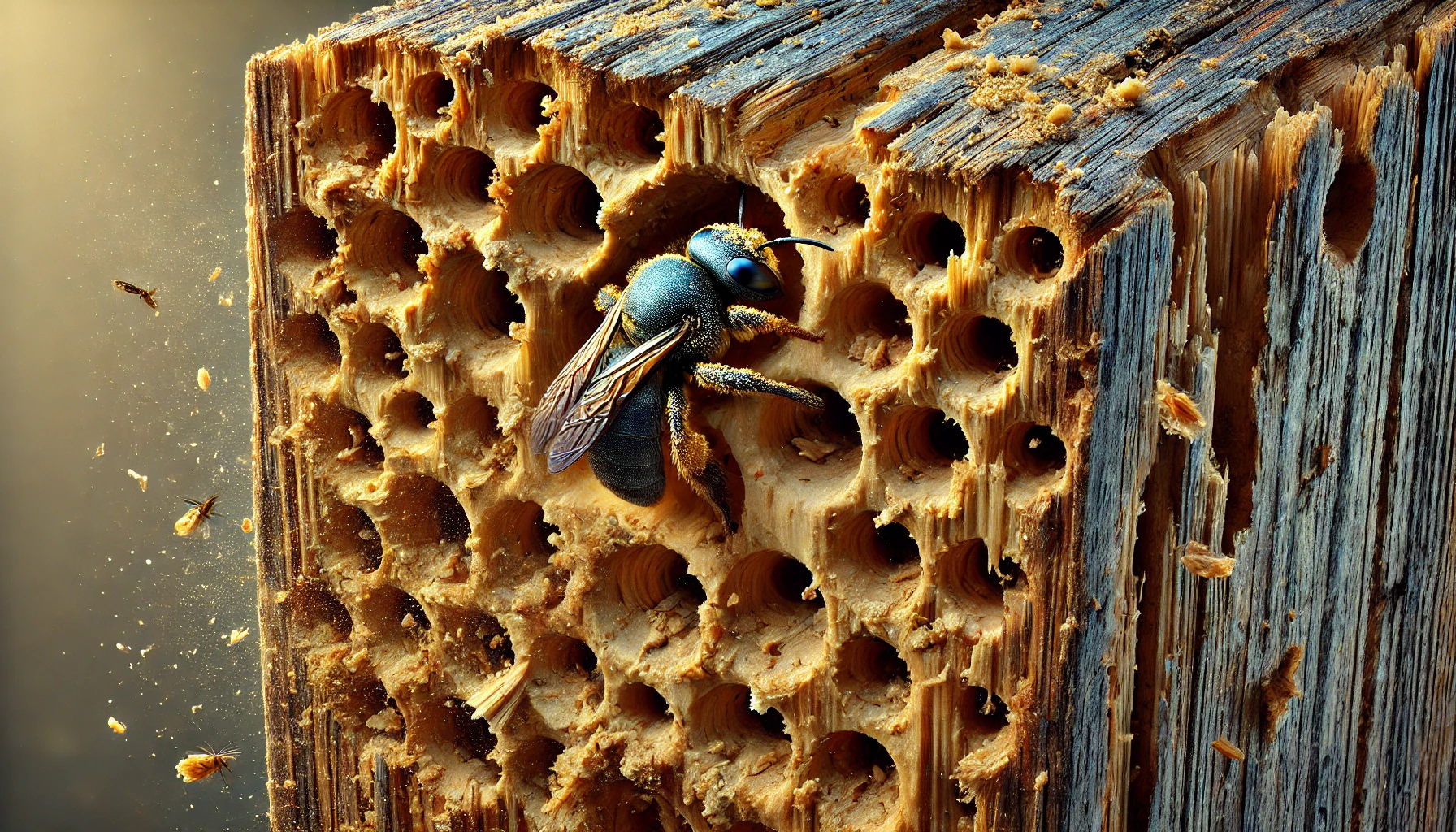
Potential Damage Caused by Carpenter Bees
In overtime or in the near future, carpenter bees can cause significant structural damage in your homes by expanding and growing their tunnels each breeding season passes by. Repeated tunnelling can weaken structural integrity, leading to costly repairs. Additionally, woodpeckers attracted to carpenter bee larvae may exacerbate damage by pecking large holes into affected wood.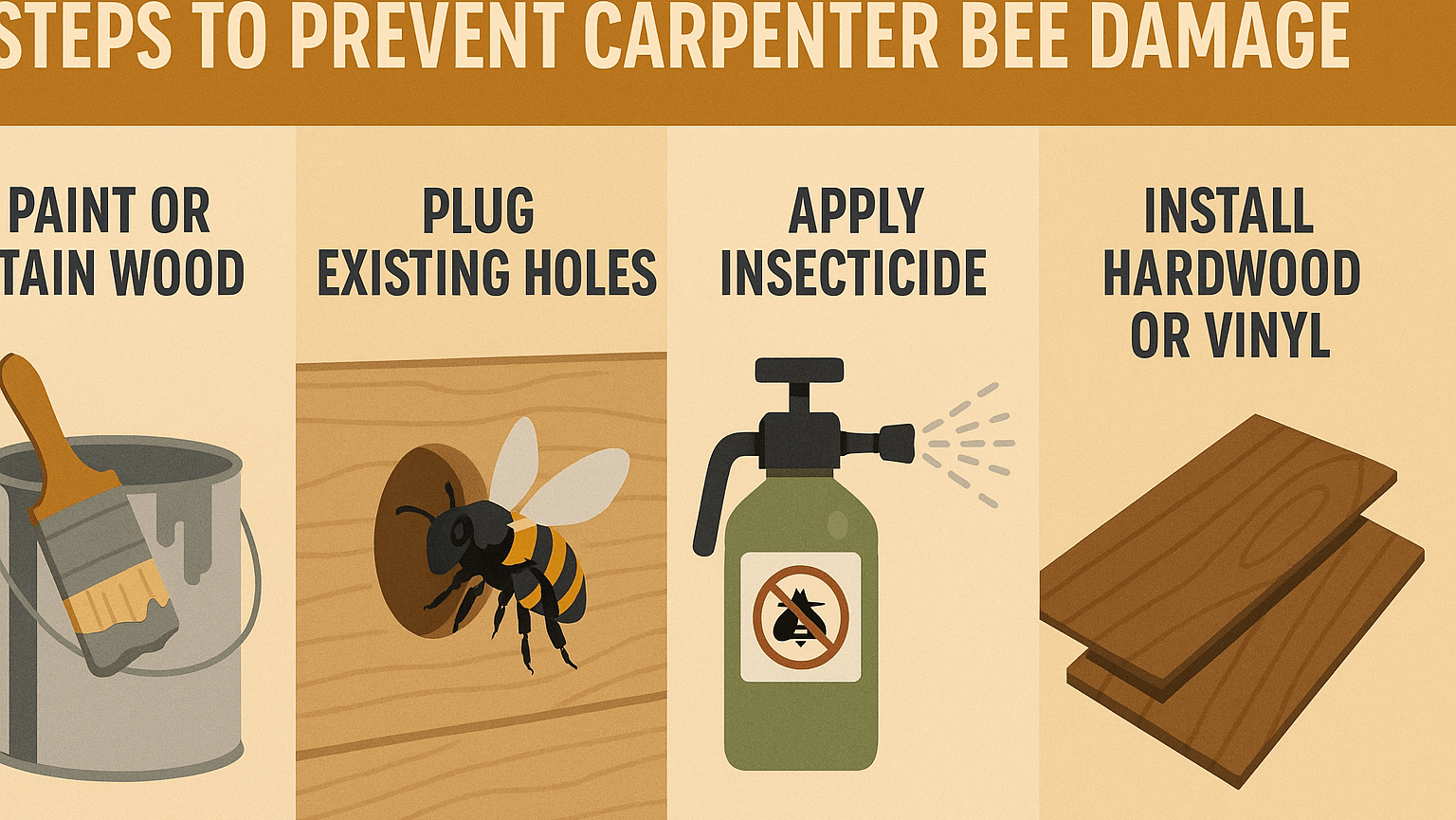
Step Guide to Prevent Carpenter Bee Damage
Step 1: Inspect and Identify Vulnerable Areas
-
Regular Inspections: Take a stroll around your property every spring and summer. Check exposed and vulnerable wood structures like decks, eaves, patio fences, and sheds for signs of carpenter bee activity. Catching carpenter bee activity early means less damage and stress in the long run.
-
Identify Target Areas: Unpainted, untreated, or softwood surfaces are prime targets for carpenter bee infestations.
Step 2: Seal and Treat Wood Surfaces
-
Apply Protective Coatings: You know what carpenter bees hate? Treated wood. A good coat of Paint, polyurethane, stain, sealant or varnish helps deter carpenter bees, with painted wood being the most effective.
-
Regular Maintenance: Don’t forget—Repaint or reseal wood surfaces every 2-3 years to maintain protection.
-
Use Resistant Materials: Opt for hardwoods or pressure-treated wood in construction projects to reduce the risk of infestation.
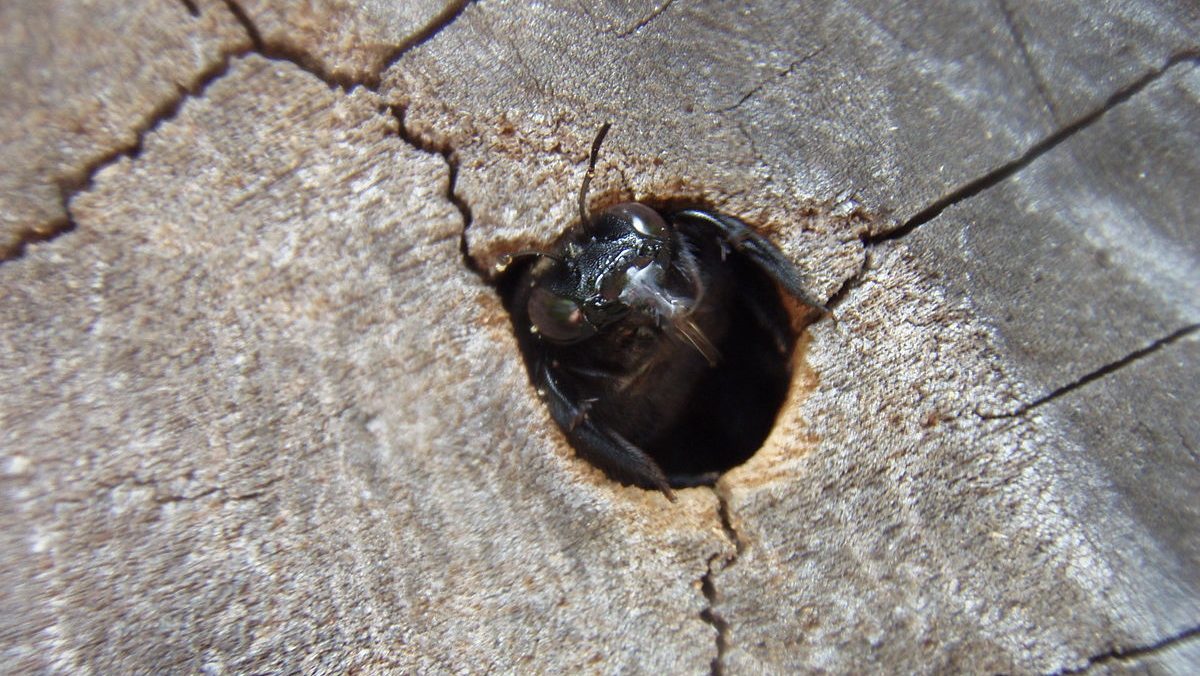
Step 3: Fill Existing Carpenter Bee Holes
-
Seal Holes Properly: Timing is everything here. Use wood filler, steel wool or caulk to close inactive carpenter bee holes, ideally in late summer or early fall first makes it even more difficult for bees to return. Plug existing holes in late summer or early fall after the bees have vacated.
-
Prevent Re-infestation: A little sanding and paint or seal the area after filling to discourage bees from returning.
-
Replace Damaged Sections: For severe damage, consider replacing the affected wood entirely.

Step 4: Employ Natural Repellents
-
Use Citrus Oil Sprays: Sprays made from lemon or orange peels naturally repel carpenter bees.
-
Try Essential Oils: Almond oil, eucalyptus oil, peppermint oil, and tea tree oil are effective natural deterrents.
-
Reapply Regularly: Mixing some citrus or almond oil with water and spraying it onto wood surfaces regularly is both easy and environmentally friendly. Apply natural repellents frequently, especially during peak activity in spring and summer. Honestly, your porch will smell amazing too.
Step 5: Set Physical Barriers and Decoys
-
Install Fake Wasp Nests: Sometimes, simple methods can have significant results. Carpenter bees avoid areas where wasps are present, making decoys an effective deterrent.
-
Use Fine Mesh Screens: Cover potential entry points, vents and gaps with fine mesh to physically block bees from entering structures as bees won’t be able to squeeze through.
-
Temporary Coverage: Use wind chimes or fine mesh to cover holes until permanent repairs are completed can also keep bees away. It might sound quirky, but trust me—it works.
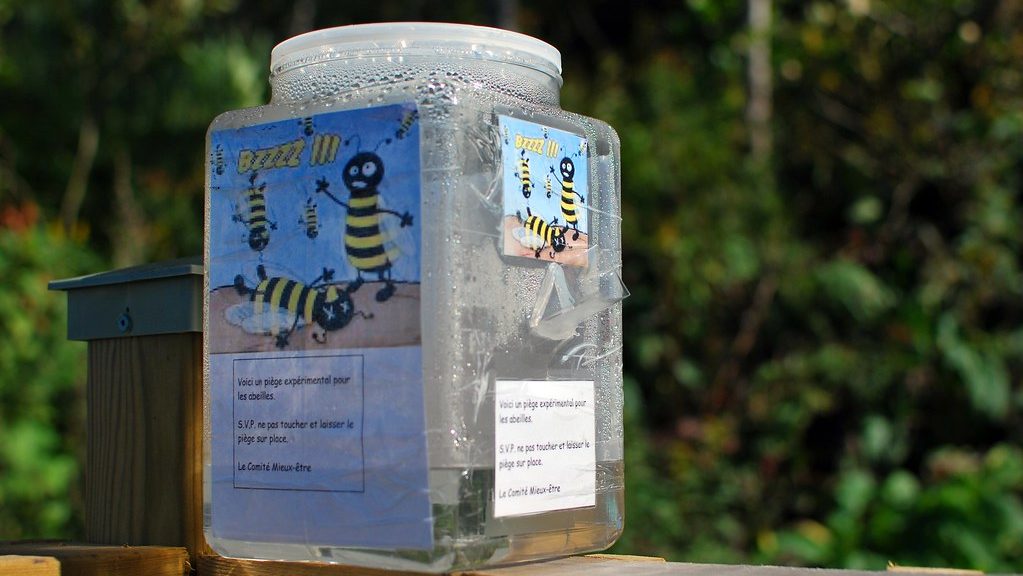
Step 6: Consider Carpenter Bee Traps
-
Use Specialized Traps: Bee traps can sound a bit intense, but they’re actually quite humane and effective. Place or hang traps near affected wood areas or in areas with high bee activity to capture carpenter bees without chemicals.
-
Effective Population Control: Traps help safely reduce local bee populations and minimize structural damage. Problem solved, stress minimized.
Step 7: Provide Alternative Nesting Sites (Optional)
-
Offer Bee Houses: If you’re eco-conscious, why not set up an alternative nesting site away from your home? You can provide a simple wooden bee house in your yard. Place untreated wood blocks or bee houses in secluded areas as alternative nesting spots which can attract carpenter bees, keeping them away from your porch.
-
Strategic Placement: Position alternative habitats away from commonly used structures to divert bees from your home. You get to coexist peacefully and protect your home at the same time.
DIY vs. Professional Pest Control
-
DIY Methods: Effective for minor infestations and prevention; safe and budget-friendly but requires ongoing effort.
-
Professional Services: Recommended for severe infestations or extensive damage; experts use specialized treatments and equipment for thorough protection.
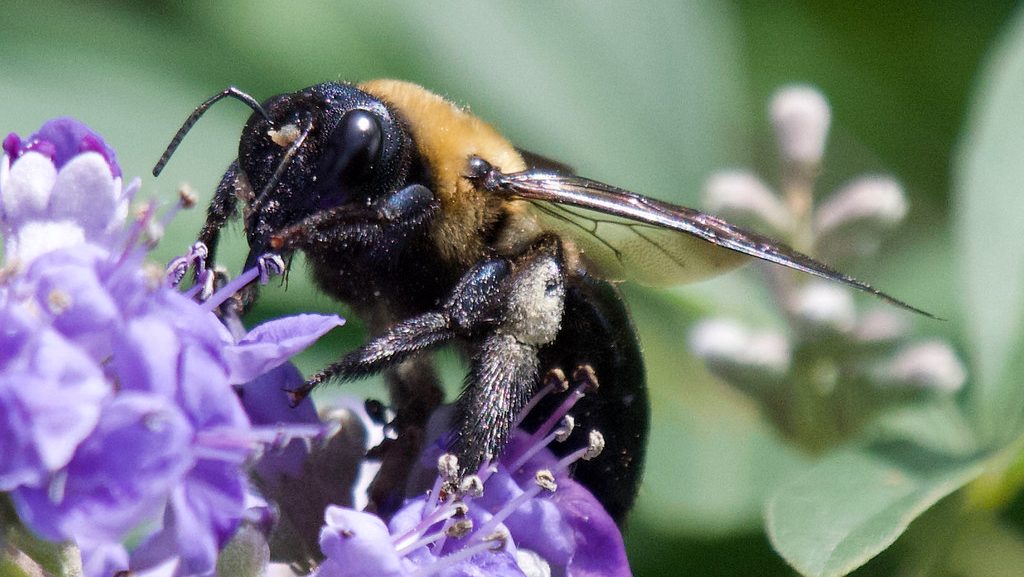
Safe and Environmentally Friendly Approaches
Prioritize humane deterrence methods over extermination:- Regularly maintain painted and sealed wood.
- Apply natural repellents (citrus, almond, eucalyptus oils).
- Use physical barriers and traps.
- Offer alternative nesting sites to protect both your property and local pollinators.
Long-Term Prevention Tips
-
Schedule Regular Inspections: Conduct property inspections in spring and fall to detect early signs of carpenter bee activity.
-
Address Infestations Quickly: Take immediate action if new signs of carpenter bee activity appear.
-
Maintain Wood Protection: Keep paint or sealants on exposed wood to prevent bee attraction.
-
Replace Damaged Wood: Promptly swap out rotting or damaged wood with treated or hardwood materials to deter infestations.
-
Stay Informed: Keep up with updated prevention strategies and new pest control methods to enhance protection.
Tips for Carpenter Bee Management
-
Remove Unused Wooden Items: Discard old and unused wooden materials or debris that could attract carpenter bees.
-
Keep Your Property Clean: Maintain cleanliness around your home to minimize bee attractants.
-
Encourage Natural Predators: Allow woodpeckers (carefully) or use strategic landscaping with plants like mint, eucalyptus, or citronella to naturally deter bees.





